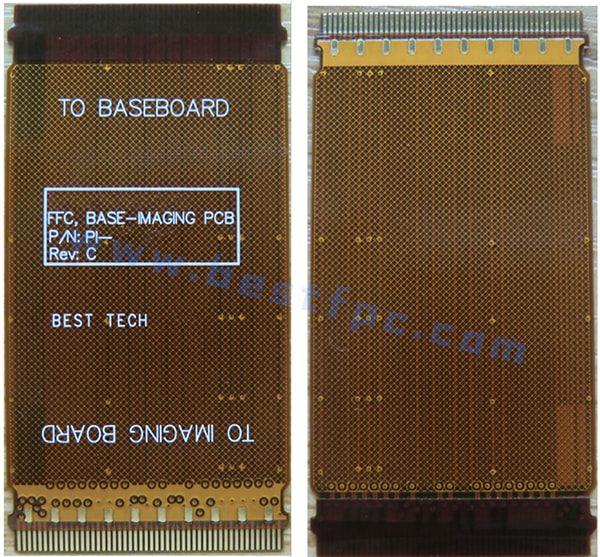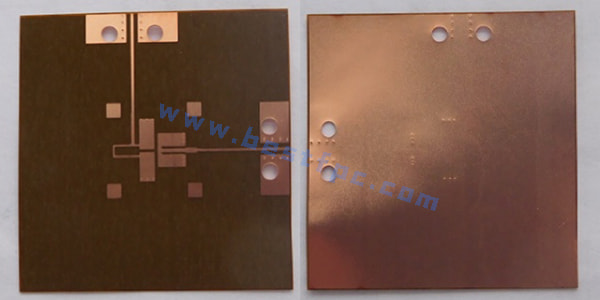There are two different design of copper trace, namely solid copper and grid copper. Do you know what is the difference between solid copper and grid copper?
Solid copper has the dual functions of increasing current and shielding, but if solid copper is used for wave soldering, the board may lift up and even blisters. Low-frequency circuits have circuits with large currents, such as commonly used copper foil. Below is a sample picture of 2 layers FPC, the top layer is copper trace, the bottom layer is a solid copper/copper foil.
The grid copper is mainly used for shielding, and the effect of increasing the current is reduced. From the perspective of heat dissipation, the grid is good (it reduces the heating surface of the copper) and plays a certain role in electromagnetic shielding. But we need to pay attention to the spacing of the grid: if it is too small, this may cause inaccurate alignment of the top and bottom copper layers especially for multilayer board; If it's too big, there's no shielding. Below is a sample picture of 4 layers FPC, Layer one, layer two and layer four are grid copper layer.

Different copper trace designs also have an effect on impedance. For the same projects and materials, if the reference layer is solid copper and grid copper, the impedance they reach may differ by 20-30 ohms. It also has a certain relationship with the trace width and space of the grid copper layer. In general, the greater the impedance requirement, the grid copper should be selected, and the solid copper should be selected when the impedance is small.
If you have any question about solid copper or grid copper when you design, please feel free to contact us at sales@www.bestfpcs.com










 2023-02-24
2023-02-24
 BEST
BEST


.png)
.png)
.png)
.png)

.png)

